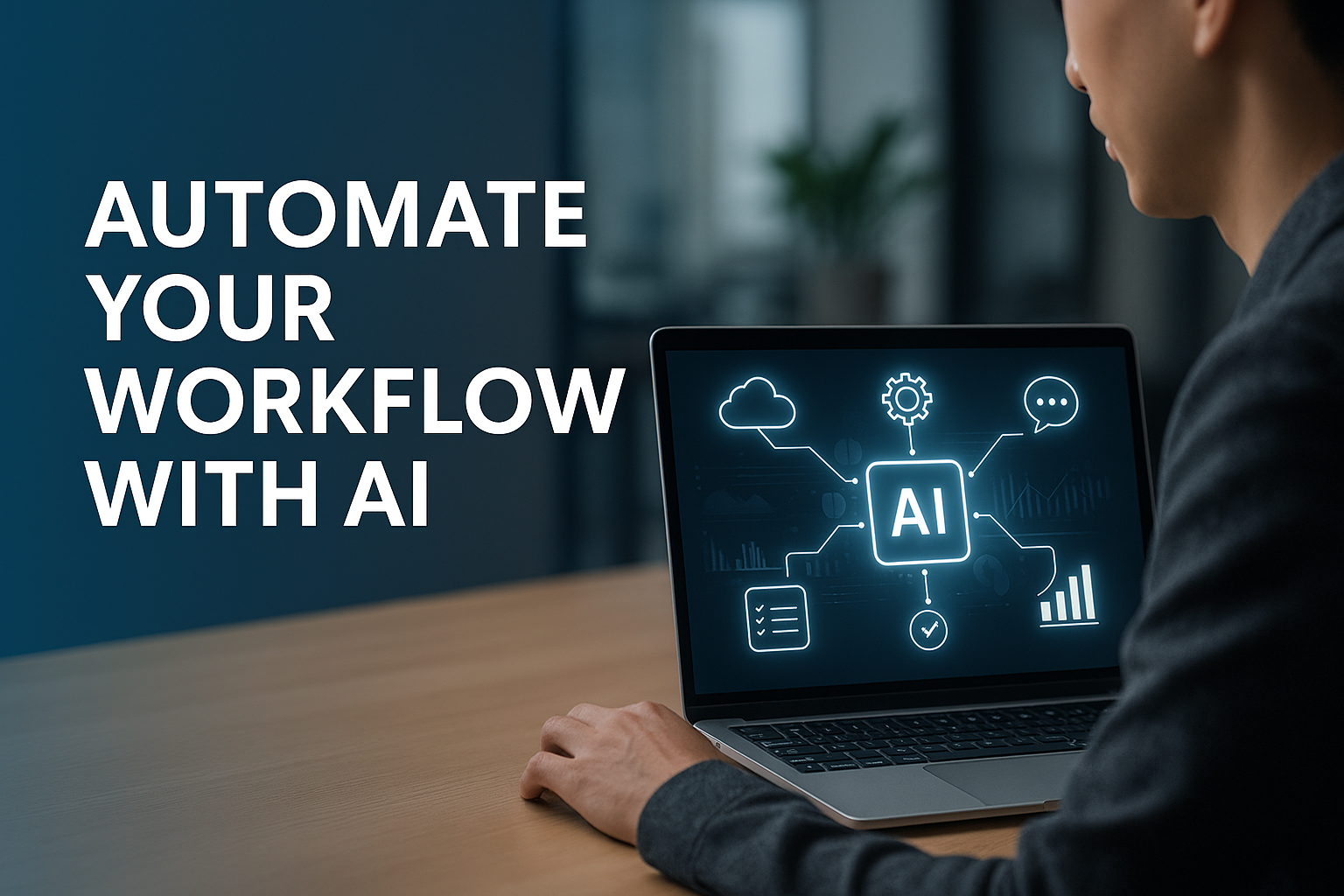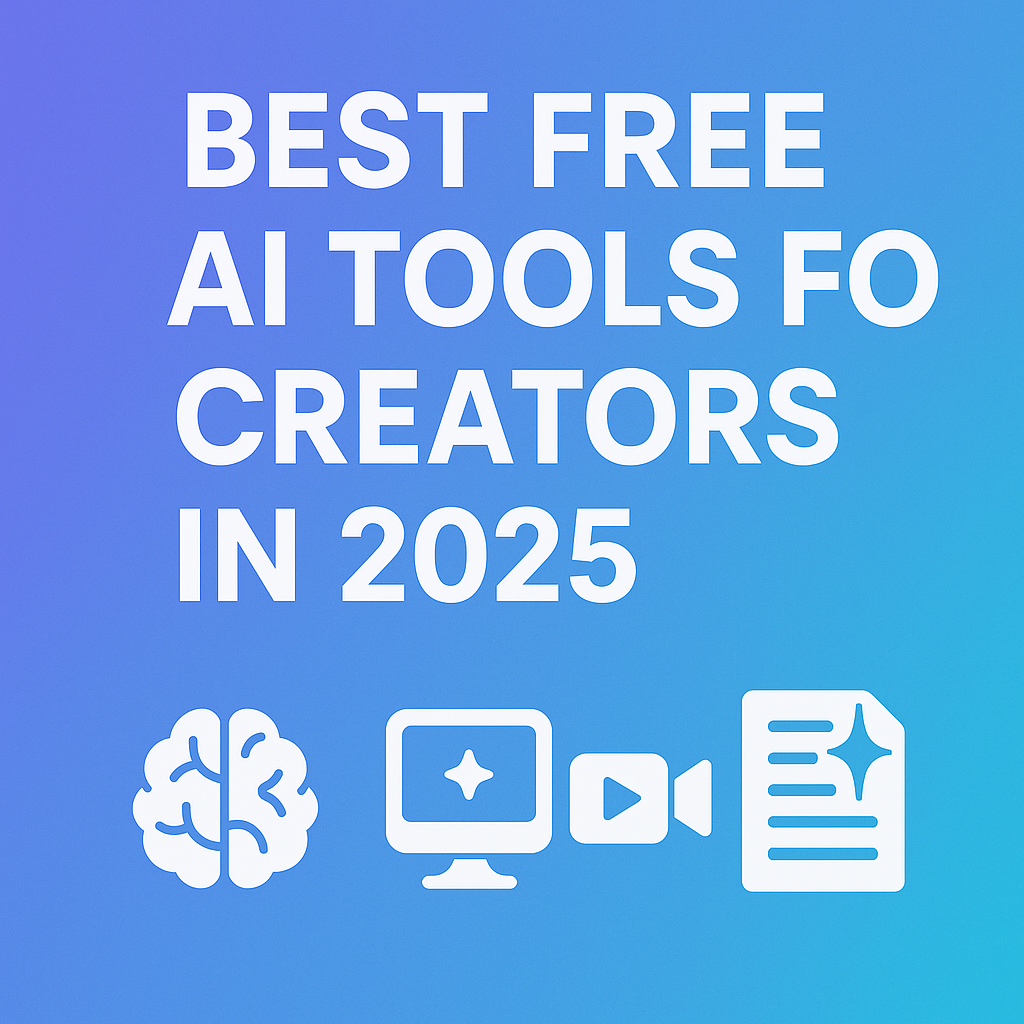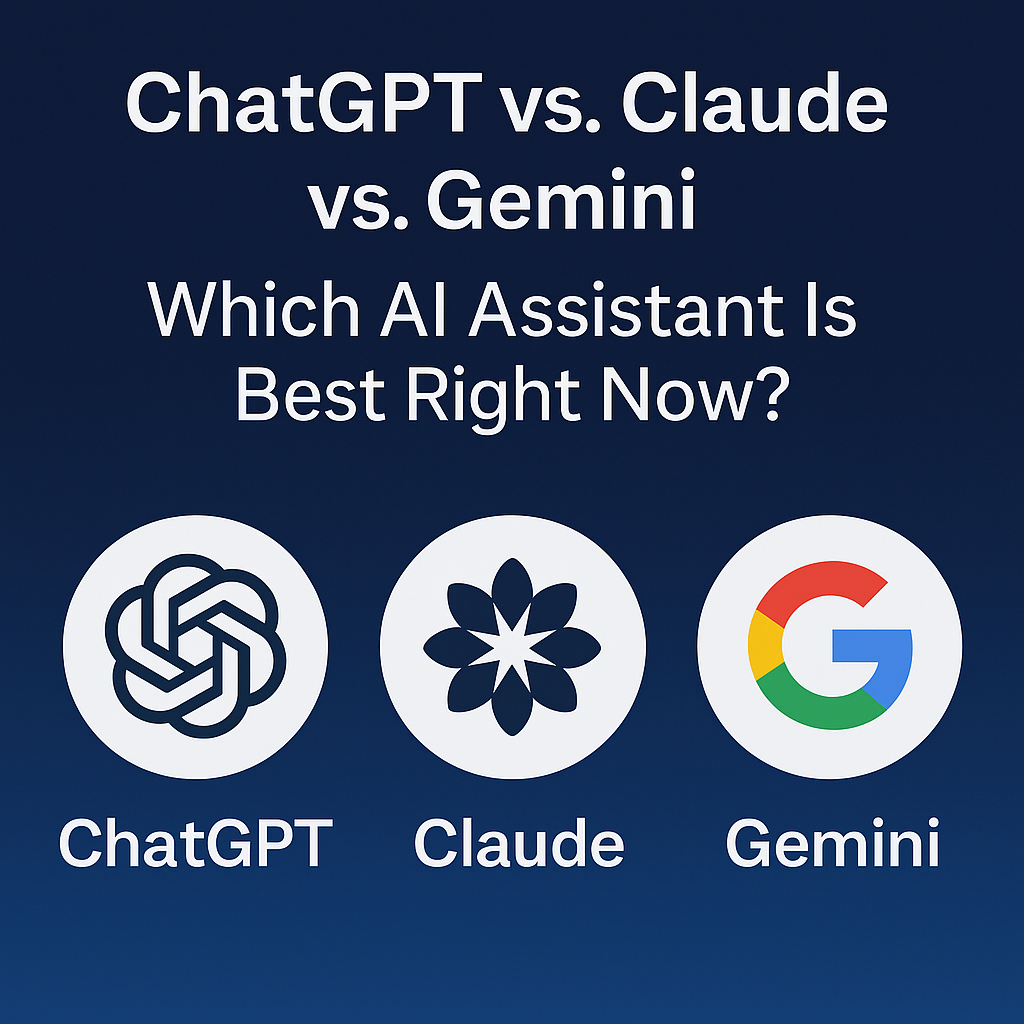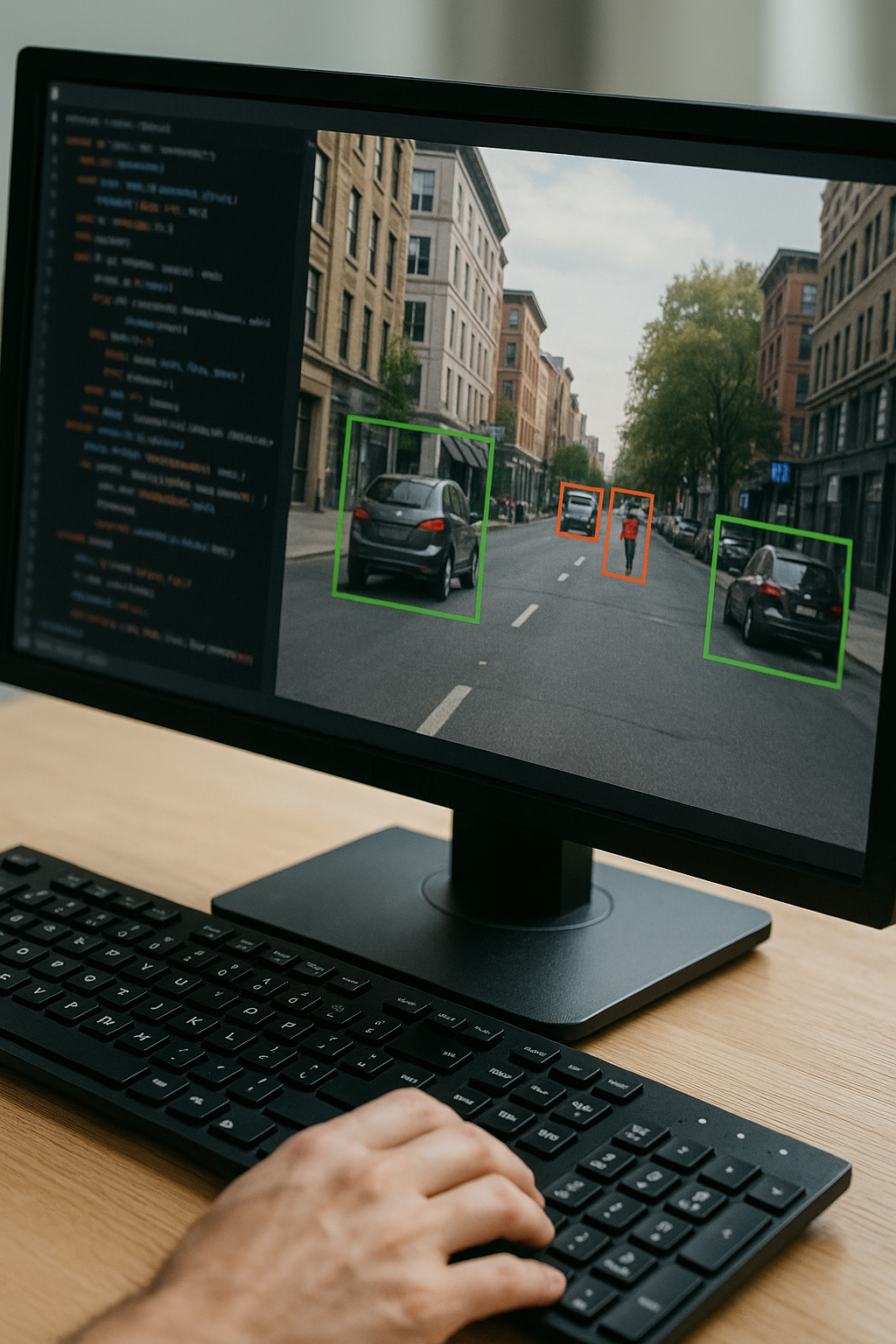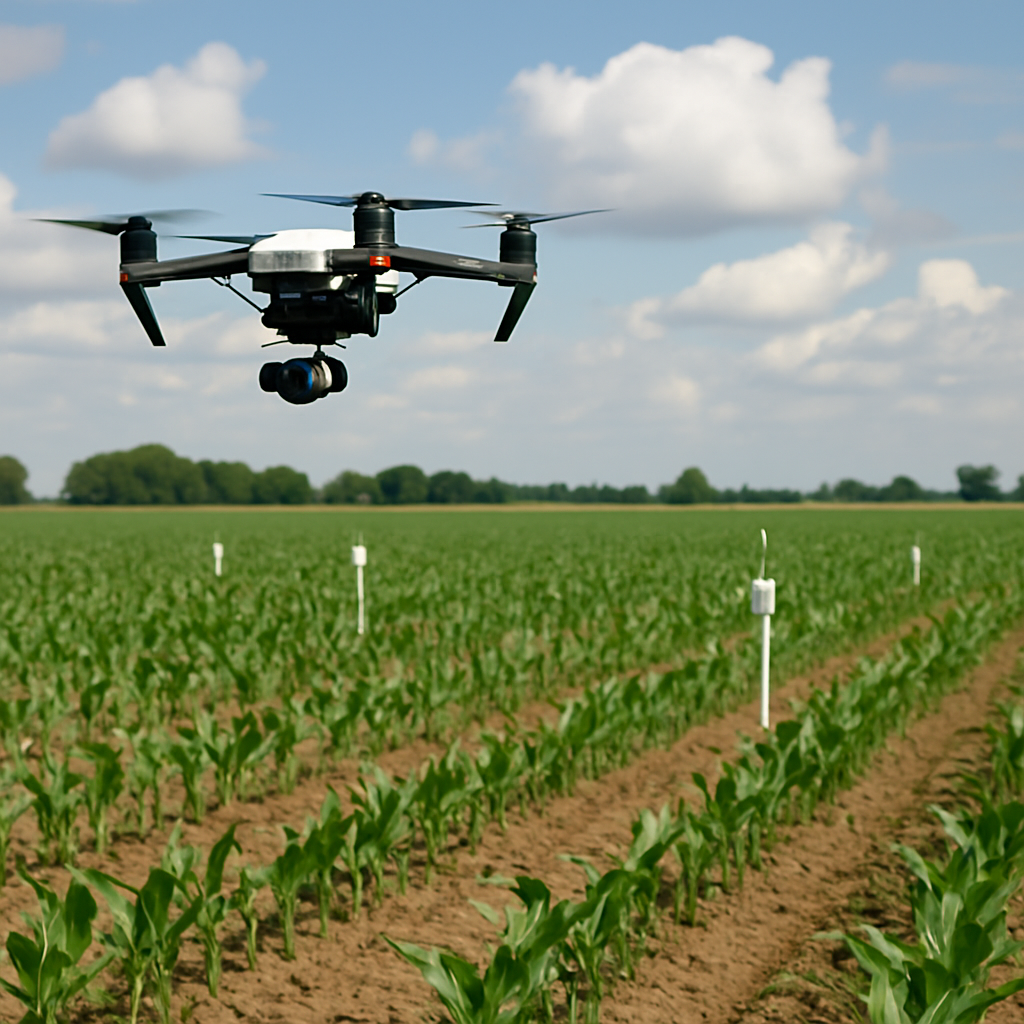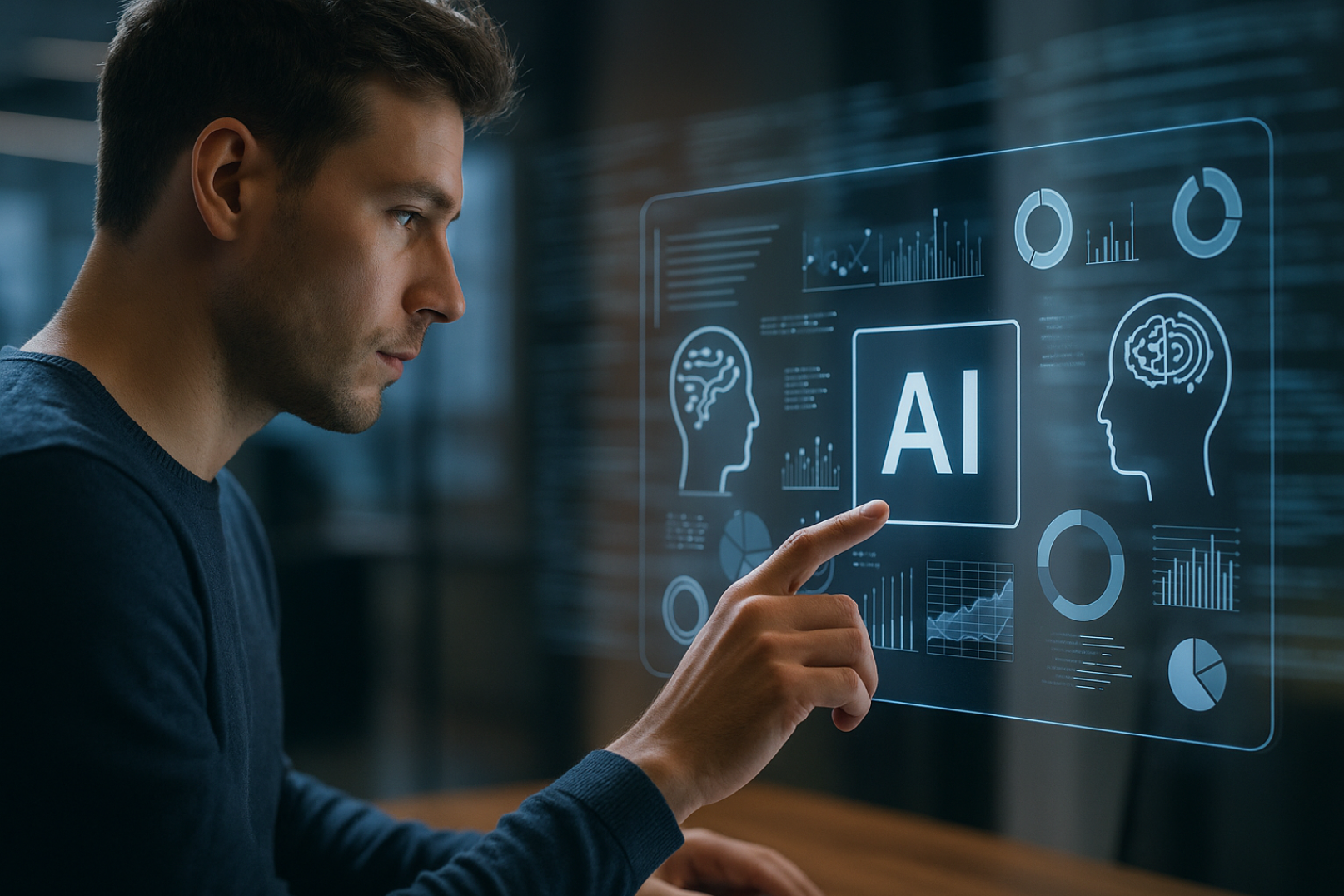The 7 Biggest AI News Stories of the Week
A Deep Dive into the Future of Technology
As artificial intelligence continues to evolve at an unprecedented pace, it's reshaping industries, sparking innovation, and raising important questions about the future of technology and society. This week has been particularly eventful in the world of AI, with groundbreaking developments that promise to push the boundaries of what's possible. Let's dive deep into the seven most significant AI news stories of the past week, exploring their implications and potential impact on various sectors.
OpenAI Introduces GPT-4 Turbo: A New Era of Language AI
OpenAI has unveiled GPT-4 Turbo, the latest iteration of its groundbreaking language model, setting a new standard for AI-powered natural language processing and generation.
Key Features and Improvements:
- Enhanced Performance: GPT-4 Turbo boasts a 30% faster response time compared to its predecessor, GPT-4. This speed boost is achieved through optimized algorithms and more efficient hardware utilization.
- Expanded Context Window: The model now supports a context window of 128,000 tokens, a significant increase from GPT-4's 32,000 tokens. This allows for more comprehensive analysis of longer texts and more coherent long-form content generation.
- Reduced Hallucinations: OpenAI has implemented new training techniques to minimize the occurrence of AI hallucinations – instances where the model generates false or nonsensical information. Early tests show a 40% reduction in hallucinations compared to GPT-4.
- Multilingual Capabilities: GPT-4 Turbo now supports over 100 languages with near-native fluency, including improved understanding of context and idiomatic expressions across languages.
- Enhanced Reasoning and Analytical Skills: The model demonstrates improved capability in complex problem-solving, mathematical reasoning, and scientific analysis.
- Ethical Safeguards: OpenAI has integrated more robust ethical guidelines into the model, improving its ability to recognize and avoid generating harmful or biased content.
Industry Impact: The release of GPT-4 Turbo is expected to have far-reaching implications across various sectors:
- Customer Service: Chatbots and virtual assistants powered by GPT-4 Turbo will be able to handle more complex queries and provide more nuanced, context-aware responses.
- Content Creation: The improved language generation capabilities will enhance automated content creation tools, potentially transforming journalism, marketing, and creative writing.
- Education: GPT-4 Turbo's expanded knowledge base and improved reasoning skills could revolutionize personalized learning and tutoring systems.
- Healthcare: The model's enhanced analytical capabilities could assist in medical research, diagnosis, and treatment planning.
- Legal and Financial Services: Improved document analysis and language understanding could streamline legal research and financial modeling.
Challenges and Considerations: While GPT-4 Turbo represents a significant leap forward, it also raises important questions:
- Job Displacement: The increased capabilities of AI language models may accelerate automation in knowledge-based industries.
- Ethical Use: Despite improved safeguards, there are ongoing concerns about the potential misuse of such powerful language models for generating misinformation or manipulative content.
- Data Privacy: The training of such advanced models requires vast amounts of data, raising questions about data sourcing and privacy.
Google's DeepMind Achieves Breakthrough in Protein Folding Prediction
DeepMind, Google's AI research laboratory, has announced a major advancement in its AlphaFold system, dramatically improving the accuracy and scope of protein structure prediction.
Technical Details:
- Expanded Database: AlphaFold can now predict the structure of over 200 million proteins, covering nearly all known proteins in scientific databases.
- Improved Accuracy: The system now achieves 95% accuracy for complex protein structures, up from 92% in the previous version.
- Protein Interactions: AlphaFold can now model how different proteins interact with each other, a crucial capability for understanding biological processes and designing drugs.
- Speed Improvements: The latest version can predict protein structures 1000 times faster than the original AlphaFold, enabling rapid analysis of newly discovered proteins.
Methodology: DeepMind's breakthrough is based on several key innovations:
- Enhanced Machine Learning Architecture: A new neural network design that better captures the physical properties of protein folding.
- Improved Training Data: Incorporation of more diverse and high-quality protein structure data in the training process.
- Integration of Evolutionary Information: Better utilization of data on protein evolution to inform structure predictions.
Potential Impact: This advancement could revolutionize various fields of biology and medicine:
- Drug Discovery: Faster and more accurate protein structure prediction could significantly accelerate the drug development process, potentially leading to new treatments for various diseases.
- Fundamental Biology: Improved understanding of protein structures and interactions will enhance our knowledge of basic biological processes.
- Enzyme Engineering: The ability to predict protein structures more accurately could aid in the design of custom enzymes for industrial and environmental applications.
- Personalized Medicine: Better protein structure prediction could help in understanding genetic diseases and designing personalized treatments.
Challenges and Future Directions: While this breakthrough is significant, there are still challenges to address:
- Experimental Validation: Predictions still need to be validated through experimental methods, which can be time-consuming and expensive.
- Dynamic Proteins: The current model focuses on static protein structures, but many proteins are dynamic and change shape as they function.
- Computational Resources: Running these advanced models requires significant computational power, which may limit accessibility for some researchers.
Tesla Unveils New AI-Powered Autopilot System
Tesla has announced a major update to its Autopilot system, leveraging advanced AI to enhance autonomous driving capabilities and push the boundaries of what's possible in vehicle automation.
Key Features of the New Autopilot System:
Enhanced Object Detection and Classification:
- Utilizes a new neural network architecture that can identify and classify objects with 99.9% accuracy.
- Capable of detecting and responding to unusual or rarely encountered objects on the road.
- Improved performance in challenging weather conditions such as heavy rain, snow, or fog.
Advanced Urban Navigation:
- New AI algorithms for navigating complex urban environments, including roundabouts, construction zones, and areas with unclear lane markings.
- Improved handling of intersections, including better prediction of other vehicles' intentions and pedestrian behavior.
Predictive Modeling and Decision Making:
- Utilizes machine learning to predict the behavior of other road users up to 5 seconds in advance.
- Implements a new decision-making framework that weighs multiple factors to choose the safest and most efficient driving actions.
- Integration with Tesla's Neural Network:
- Continuous learning from the entire Tesla fleet, allowing the system to adapt to new scenarios and improve over time.
- Regular over-the-air updates to incorporate new capabilities and refinements.
Enhanced User Interface:
- New augmented reality display showing the car's perception of its environment in real-time.
- Improved voice control for hands-free operation of various vehicle functions.
Technical Specifications:
- Compute Hardware: Powered by Tesla's new in-house designed AI chip, offering 10 times the processing power of the previous generation.
- Sensors: Upgraded camera system with higher resolution and wider field of view, complemented by improved radar and ultrasonic sensors.
- Software Architecture: New modular software design allowing for easier updates and customization of specific driving behaviors.
Safety Implications: While Tesla claims significant safety improvements with the new system, it also raises important considerations:
- Reduced Accidents: Tesla projects a 50% reduction in accidents compared to human drivers based on initial testing.
- Driver Attention: Despite advanced capabilities, Tesla emphasizes that drivers must remain attentive and ready to take control.
- Ethical Decision-Making: The AI's ability to make split-second decisions in potential accident scenarios raises ethical questions about how these decisions are programmed.
Regulatory and Industry Impact:
- Regulatory Scrutiny: The advanced capabilities of the new system may prompt regulators to reassess current autonomous driving regulations.
- Industry Competition: Tesla's announcement is likely to accelerate the autonomous driving race among automakers and tech companies.
- Insurance Implications: The improved safety features could lead to changes in how car insurance is priced for vehicles with advanced autonomous capabilities.
Challenges and Future Development:
- Edge Cases: Handling rare and unexpected driving scenarios remains a significant challenge for autonomous systems.
- Public Trust: Building public confidence in AI-driven vehicles is crucial for widespread adoption.
- Scalability: Ensuring consistent performance across different regions and driving conditions as the system scales globally.
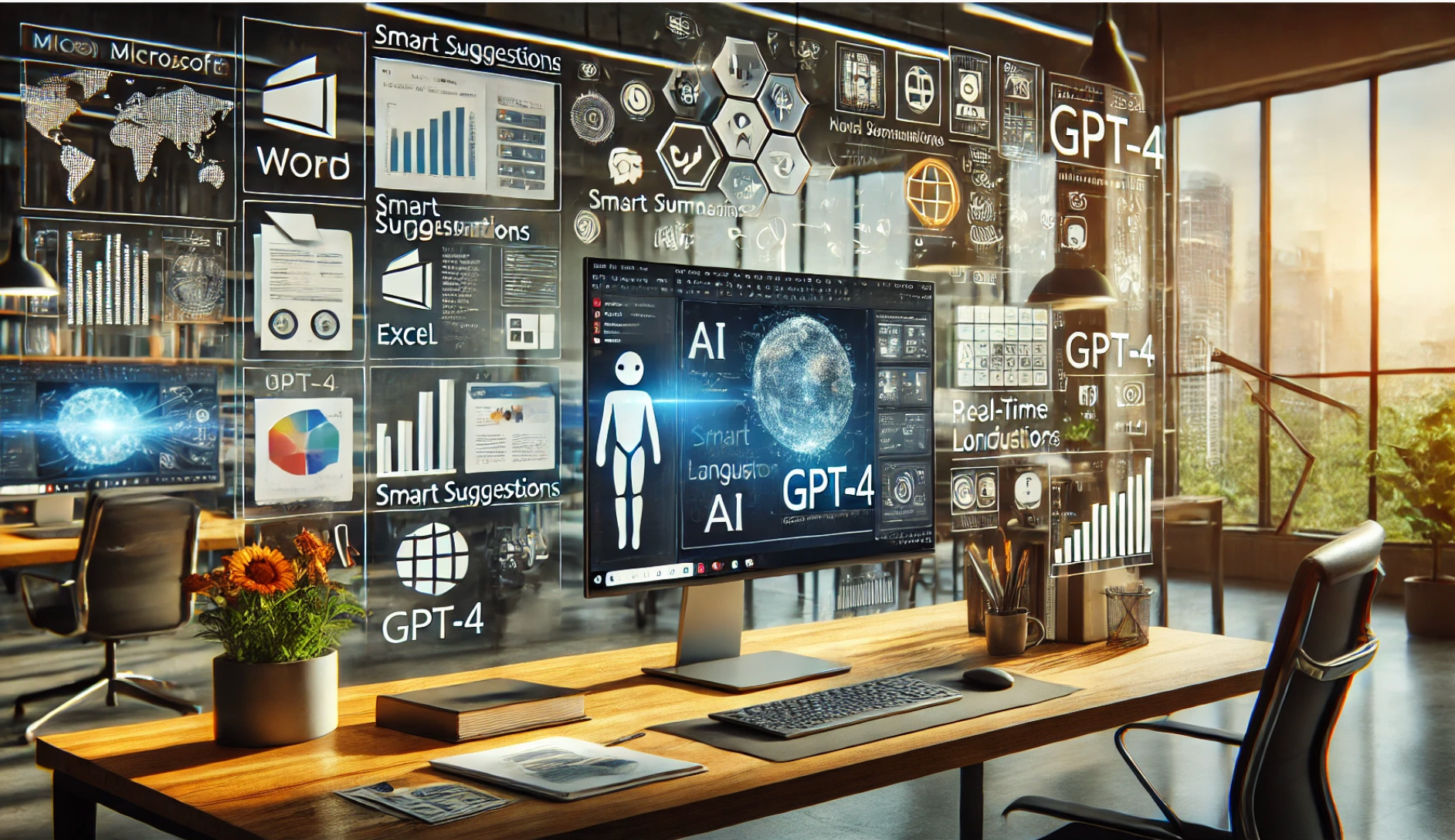
Microsoft Integrates GPT-4 into Office Suite
Microsoft has begun rolling out a comprehensive integration of OpenAI's GPT-4 technology across its Office suite, promising to transform how users interact with Word, Excel, and PowerPoint. This move represents a significant step in bringing advanced AI capabilities to everyday productivity tools.
Detailed Features:
Microsoft Word:
Advanced Text Generation:
- AI-powered writing assistance that can generate entire paragraphs based on brief prompts.
- Context-aware suggestions for improving sentence structure, vocabulary, and tone.
- Automated summarization of long documents with adjustable detail levels.
Intelligent Editing:
- Enhanced grammar and style checking that goes beyond basic rules to suggest more nuanced improvements.
- AI-driven rewrite suggestions for clarity and impact.
- Automated citation and reference management.
Collaboration Enhancements:
- AI-powered comment suggestions to streamline the review process.
- Intelligent conflict resolution in collaborative editing scenarios.
Microsoft Excel:
Data Analysis and Insights:
- Natural language queries to analyze data (e.g., "Show me sales trends for the last quarter").
- Automated pattern recognition and anomaly detection in large datasets.
- AI-generated data visualizations with customizable options.
Formula and Function Assistance:
- Natural language to formula conversion (e.g., "Calculate the average sales for each region").
- Intelligent function suggestions based on data context and user history.
- Automated error detection and correction in complex formulas.
Predictive Modeling:
- AI-powered forecasting tools for trend analysis and future projections.
- What-if scenario modeling with natural language inputs.
Microsoft PowerPoint:
AI-Powered Presentation Creation:
- Automated slide generation based on document content or user prompts.
- Intelligent layout suggestions that adapt to content type and amount.
- Dynamic content recommendations including relevant images, charts, and quotes.
Design Intelligence:
- AI-driven design suggestions for color schemes, fonts, and overall aesthetics.
- Automated alignment and arrangement of slide elements for optimal visual impact.
- Accessibility checker with AI-powered improvement suggestions.
Presentation Coach:
- Real-time feedback on delivery, including pacing, filler words, and engagement levels.
- Culturally aware language suggestions for global audiences.
- Automated generation of speaker notes and talking points.
Integration and User Experience:
- Seamless AI Integration: The AI features are designed to feel like a natural extension of the existing Office interface.
- Customizable AI Assistance: Users can adjust the level of AI involvement to suit their preferences and needs.
- Privacy Controls: Microsoft has implemented strict data handling protocols to ensure user information is protected.
Impact on Productivity:
- Time Savings: Early tests show users can complete common tasks up to 40% faster with AI assistance.
- Enhanced Creativity: The AI suggestions often lead users to explore new ideas and approaches they might not have considered.
- Accessibility: The AI features make advanced document creation and data analysis more accessible to users with varying skill levels.
Challenges and Considerations:
- Learning Curve: While designed to be intuitive, users may need time to fully leverage the new AI capabilities.
- Over-reliance Concerns: There's a potential risk of users becoming overly dependent on AI suggestions, potentially impacting critical thinking skills.
- Content Originality: As AI-generated content becomes more prevalent, there may be concerns about originality and authenticity in professional documents.
Future Developments: Microsoft has hinted at future expansions of the AI integration, including:
- Cross-application intelligence that can pull relevant data and content between Word, Excel, and PowerPoint.
- Integration with Microsoft Teams for AI-enhanced collaboration and communication.
- Expanded language support for global markets.
AI-Generated Art Wins Major Competition, Sparking Controversy
In a groundbreaking and controversial development, an AI-generated artwork has claimed first place in a prestigious international art competition, igniting intense debates about creativity, authorship, and the future of art in the age of artificial intelligence.
The Winning Artwork:
- Title: "Harmonic Convergence in the Digital Age"
- Medium: Digital print on canvas, 60" x 40"
- Description: An abstract piece featuring intricate, swirling patterns that blend elements of traditional artistic styles with futuristic, algorithmic designs.
Technical Details:
- AI Model: The artwork was created using a proprietary AI model developed by tech startup ArtifexAI.
- Training Data: The model was trained on a dataset of over 100 million images, including classical and contemporary artworks, photographs, and digital designs.
- Generation Process: The artist provided textual prompts and iteratively refined the output through a series of adjustments and regenerations.
The Artist's Role:
- Jason Chen, the human behind the artwork, describes his role as a "prompt engineer" and "AI art director."
- Chen spent over 200 hours refining prompts, adjusting parameters, and curating outputs to achieve the final result.
- He argues that his creative vision and decision-making were crucial in producing the winning piece.
Competition Details:
- The International Digital Art Biennale, held in Paris, is known for showcasing cutting-edge digital art.
- This year marked the first time AI-generated art was explicitly allowed in the competition.
- The judging panel, consisting of renowned artists, curators, and tech experts, was not informed which entries were AI-generated until after the final selection.
Judges' Perspective:
- The winning piece was praised for its "innovative blend of traditional aesthetics and computational complexity."
- Some judges expressed surprise upon learning of its AI origins, noting that it displayed a level of coherence and intentionality they associated with human artists.
Controversy and Debate: The win has sparked intense discussions in the art world and beyond:
Authorship and Creativity:
- Critics argue that AI cannot be considered a true creator, as it lacks consciousness and intentionality.
- Supporters contend that AI is a new tool for human creativity, similar to the introduction of photography or digital design software.
Skill vs. Curation:
- Some artists feel that AI-generated art devalues traditional artistic skills.
- Others argue that curation and prompt engineering are emerging art forms requiring significant creativity and skill.
Ethical Considerations:
- Questions arise about the ownership of AI-generated art, especially given the vast datasets used to train the models.
- Concerns about potential copyright infringement if AI models incorporate elements from existing artworks.
Future of Art Competitions:
- Calls for separate categories for AI-generated art in future competitions.
- Debates about how to fairly judge human-created art alongside AI-assisted works.
Democratization vs. Elitism:
- Some see AI art tools as democratizing creativity, allowing more people to express themselves artistically.
- Others worry about the potential homogenization of art styles and the loss of human uniqueness in artistic expression.
Industry Impact:
- Galleries and museums are grappling with how to categorize and display AI-generated art.
- Art schools are considering incorporating AI art techniques into their curricula.
- The art market is seeing increased interest in AI-generated works, with some commanding high prices at auctions.
Legal and Copyright Implications:
- Lawyers specializing in intellectual property are closely watching developments in AI art.
- There are ongoing discussions about whether current copyright laws are adequate to address AI-generated creative works.
Future Outlook:
- Experts predict a continued rise in AI-human collaborations in art creation.
- There's growing interest in developing AI models that can engage in more complex artistic reasoning and conceptualization.
- Some envision future AI systems that can generate not just images, but entire artistic experiences, blending visual, auditory, and interactive elements.
China Announces Major Investment in AI Chip Development
In a move that could significantly alter the global AI landscape, the Chinese government has unveiled a massive $10 billion initiative aimed at boosting domestic AI chip production and reducing reliance on foreign technology.
Key Aspects of the Initiative:
Focus on Advanced Chip Manufacturing:
- Goal to develop 5nm and 3nm chip manufacturing capabilities within the next five years.
- Investments in extreme ultraviolet (EUV) lithography technology, crucial for producing advanced chips.
- Plans to establish multiple state-of-the-art semiconductor fabrication plants (fabs) across the country.
Emphasis on Neuromorphic Computing:
- Significant funding allocated to research and development of neuromorphic chips that mimic the human brain's neural structure.
- Collaboration between universities and tech companies to develop more energy-efficient AI processing units.
Quantum AI Research:
- Investment in quantum computing research with a focus on its applications in AI.
- Plans to build a national quantum AI laboratory to explore the intersection of quantum computing and artificial intelligence.
AI Chip Design:
- Funding for startups and established companies focusing on AI chip architecture design.
- Emphasis on developing chips optimized for machine learning and deep learning algorithms.
Talent Development:
- Creation of specialized academic programs in semiconductor engineering and AI chip design.
Talent Development:
- Creation of specialized academic programs in semiconductor engineering and AI chip design at top Chinese universities.
- Attractive incentives for overseas Chinese experts to return and contribute to the domestic chip industry.
- Establishment of a national AI chip talent pool with competitive salaries and benefits.
Industry Collaboration:
- Fostering partnerships between state-owned enterprises and private tech giants like Huawei, Alibaba, and Baidu.
- Creation of an AI chip industry alliance to facilitate knowledge sharing and resource pooling.
- Incentives for international companies to set up R&D centers in China, with safeguards for intellectual property.
Supply Chain Development:
- Investments in companies producing essential materials and equipment for chip manufacturing.
- Efforts to develop domestic alternatives for key components currently sourced internationally.
Geopolitical Implications:
- Increased competition with the US and other countries in the race for AI supremacy.
- Potential for further restrictions on technology exports to China from Western countries.
- Possible reshaping of global semiconductor supply chains as China aims for self-sufficiency.
Economic Impact:
- Expected creation of hundreds of thousands of high-skilled jobs in the semiconductor and AI sectors.
- Potential for increased foreign investment in China's tech sector, despite geopolitical tensions.
- Possible downward pressure on global chip prices as China's production capacity increases.
Challenges:
- Catching up with established leaders in advanced chip manufacturing, such as TSMC and Samsung.
- Overcoming potential shortages of specialized equipment and materials due to export controls.
- Balancing state control with the need for private sector innovation and efficiency.
Global Response:
- Other countries, including the US, EU, and Japan, are likely to increase their own investments in semiconductor technology in response.
- Potential for increased international collaboration among countries seeking to maintain a technological edge over China.
Long-term Outlook:
- If successful, this initiative could significantly alter the global AI and semiconductor landscape within the next decade.
- Potential for China to become a major exporter of AI chips and related technologies.
- Increased competition could accelerate the overall pace of innovation in AI hardware.
AI-Powered Climate Model Predicts Accelerated Warming
A groundbreaking AI-enhanced climate model developed by an international team of scientists suggests that global warming may be occurring faster than previously thought, potentially necessitating more urgent climate action.
Model Details:
- Name: ClimateNet-AI
- Developed by: A consortium of climate scientists, data scientists, and AI researchers from 15 countries.
- Computing Infrastructure: Utilizes a network of supercomputers across multiple research institutions.
Key Innovations:
1. Data Integration:
- The AI model integrates data from various sources more effectively than traditional models, including:
- Satellite observations
- Ocean buoy measurements
- Ice core samples
- Tree ring data
- Historical climate records
2. Pattern Recognition:
- Advanced machine learning algorithms identify subtle patterns and relationships in climate data that might be missed by traditional statistical methods.
3. Dynamic Feedback Loops:
- The model can adjust its projections in real-time as new data becomes available, allowing for more responsive and accurate predictions.
4. High-Resolution Modeling:
- Capable of producing climate projections at a much finer geographic scale than previous models, down to areas as small as 1 square kilometer.
Key Findings:
1. Accelerated Warming:
- The model predicts a potential 1.5°C global temperature increase by 2030, approximately 5-7 years earlier than previous estimates.
2. New Feedback Loops:
- Identification of previously unrecognized feedback loops in the climate system, including:
- Methane release from thawing permafrost occurring faster than expected
- Changes in cloud formation patterns amplifying warming effects
- Ocean circulation changes affecting heat distribution more significantly than previously thought
3. Regional Variations:
- The model suggests greater variability in regional climate changes, with some areas experiencing more rapid warming and others seeing more extreme weather events.
4. Sea Level Rise:
- Projections indicate potentially faster sea level rise, with a possible increase of 0.5 to 1 meter by 2100 in a high-emissions scenario.
5. Ecosystem Impacts:
- The model predicts more rapid shifts in ecosystems, potentially outpacing the ability of many species to adapt.
Validation and Peer Review:
- The model's results have been subjected to rigorous peer review, including comparison with historical data and other climate models.
- While the findings are considered robust, the scientific community emphasizes the need for ongoing validation and refinement.
Policy Implications:
1. Urgency of Action: The accelerated timeline may require more immediate and drastic reductions in greenhouse gas emissions.
2. Adaptation Strategies: Countries may need to fast-track climate adaptation plans, particularly in vulnerable coastal areas and regions prone to extreme weather.
3. International Cooperation: The findings could intensify calls for enhanced global cooperation on climate change mitigation and adaptation.
4. Economic Planning: Governments and businesses may need to reassess long-term economic strategies in light of potentially faster climate changes.
Scientific Community Response:
- While many climate scientists are taking the new model seriously, some urge caution in interpreting its results, emphasizing the need for further study and validation.
- The model has sparked renewed debate about the role of AI in climate science and the potential for machine learning to uncover previously overlooked climate dynamics.
Future Research Directions:
- Efforts are underway to further refine the model and incorporate even more diverse data sources.
- There's growing interest in using similar AI-enhanced models to study specific aspects of climate change, such as Arctic ice melt, hurricane formation, and drought patterns.
Public Communication Challenges:
- Scientists and policymakers face the task of communicating these potentially alarming findings to the public without inducing panic or fatalism.
- There's an emphasis on coupling the urgency of the situation with messages about the potential for effective action to mitigate the worst impacts.
As AI continues to advance at an unprecedented rate, its impact on scientific research, technological innovation, and societal challenges becomes increasingly profound. The stories we've covered this week represent just a fraction of the ongoing developments in the field of artificial intelligence.
From revolutionizing drug discovery and autonomous driving to transforming artistic expression and climate modeling, AI is reshaping our world in ways both exciting and challenging. As these technologies continue to evolve, it's crucial for individuals, businesses, and policymakers to stay informed and engaged with these developments.
Want to stay at the forefront of AI innovation and its impact across industries? Sign up for our newsletter and join a community of forward-thinking professionals navigating the AI revolution.
Don't just witness the AI revolution – be an active part of it. Our newsletter provides the insights and knowledge you need to make informed decisions in an AI-driven world.
As a welcome gift, new subscribers will receive our special report: "AI in 2025: Predictions, Opportunities, and Preparing for the Next Wave of Innovation."
Join us in exploring the cutting edge of AI technology and its transformative potential. The future is being shaped by AI – make sure you're prepared to shape it too.
Sign Up For Our Weekly Newsletter and Get Your FREE Ebook " AI For Everyone - Learn the Basics and Embrace the Future"

